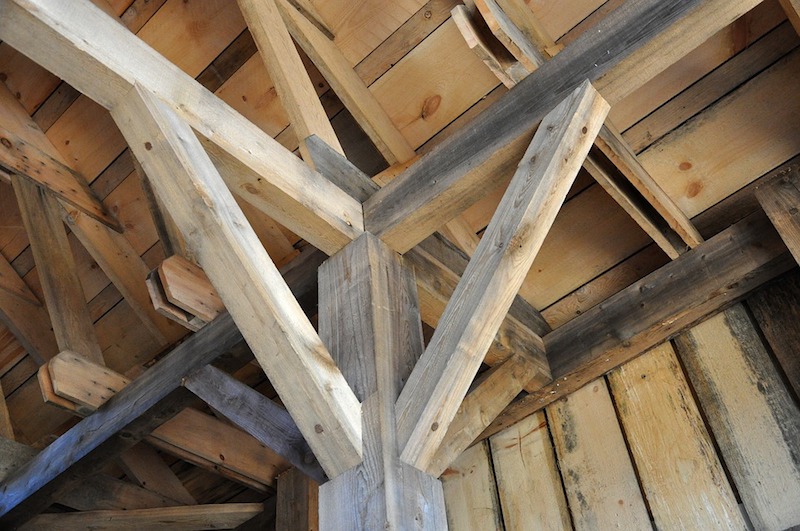Composite wood products must meet new U.S. Environmental Protection Agency (EPA) formaldehyde emissions regulations as of June 1, 2018.
Among the products impacted: particleboard, medium density fiberboard (MDF), and hardwood (decorative) plywood. Structural engineered wood products manufactured for construction applications, such as structural plywood, oriented strand board (OSB), wood I-joists, laminated veneer lumber, and glued-laminated timber, are exempt from the regulation.
Structural engineered wood products marked with the APA Mark of Quality are exempt from the regulation. In cases where unmarked structural engineered wood products from APA member mills are sold into industrial applications that do not require a certification mark, the product invoice and an APA certificate of conformance can be used to identify the product as exempt.
Certification of compliance is required to be completed by a Third Party Certifier, who will verify that the regulated composite wood product’s manufacturer is capable of complying with the emission regulation. Quarterly inspections and testing, and reviews of routine quality testing conducted at each mill are also required.
Related Stories
Codes and Standards | Jun 24, 2015
LEED building at Duke University may be retrofitted to prevent bird deaths
More birds die from colliding with buildings at Duke than on any other campus in a 45-school survey conducted by Augustana College. Duke is located along the Atlantic Flyway, a bird migration route.
Codes and Standards | Jun 24, 2015
Balcony collapse in Berkeley, Calif., prompts an examination of codes
Dry rot and too much weight appear to be the causes of a fatal accident at an eight-year-old building in Berkeley, Calif.
Codes and Standards | Jun 18, 2015
Guides to wood construction in high wind areas updated
The guides establish prescriptive, wind-resistive structural requirements for wood-frame buildings of different sizes and shapes.
Codes and Standards | Jun 18, 2015
New document addresses school safety and security
In an effort to balance security and fire safety features within codes, standards and planning, NFPA hosted a two-day workshop, “School Safety, Codes and Security”, last December. The findings are now available in an NFPA report.
Codes and Standards | Jun 18, 2015
Two myths regarding NFPA 101 Life Safety Code debunked
NFPA life safety engineer Ron Coté settles the debate over second egress doors and exit signs.
Codes and Standards | Jun 18, 2015
How to prevent corrosion in sprinkler system piping
The technical committees responsible for NFPA 13, Installation of Sprinkler Systems, have been looking at ways to eliminate or reduce corrosion in sprinkler systems for several revision cycles.
Codes and Standards | Jun 11, 2015
Steel Framing Alliance updates ‘Thermal Design and Code Compliance for Cold-Formed Steel Walls’ design guide
Includes results of new tests and addresses IECC and ASHRAE compliance paths.
Codes and Standards | Jun 11, 2015
Helena, Mont., may charge commercial developers a fee to fund public art
The fee would apply to new construction or alteration of nonresidential buildings of at least 20,000 sf.
Codes and Standards | Jun 11, 2015
DBIA releases new document on choosing a project delivery method
Provides owners and others with factors to consider when choosing the best method of delivery for their project.
High-rise Construction | Jun 5, 2015
Japanese policymakers discuss mandate for toilets in elevators
This quirky-sounding building code is a safety measure for the earthquake-prone nation.

















